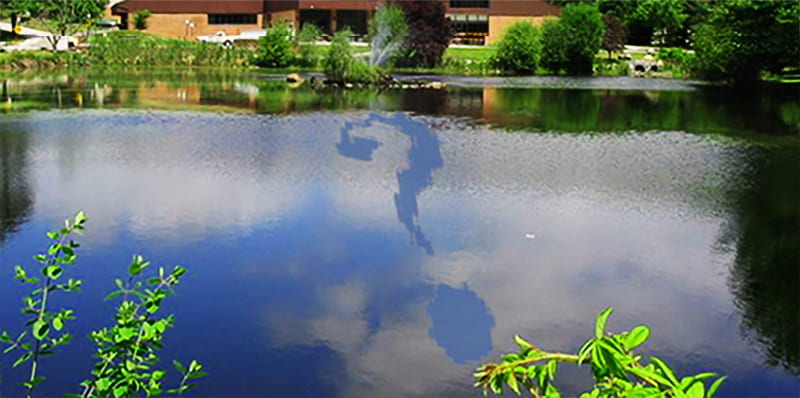Creating a Water Quality Index
A WQI is a universal language for understanding the quality of a water body.
Water quality is a global concern — not only for tap water, but oceans, rivers, streams, lakes and ponds. What about our own Choate Pond on the Pace Pleasantville campus? We look at it, walk around it, enjoy turtles sunbathing on the rocks, but what do we know about its quality?

A Water Quality Index (WQI) is a universal language for understanding water quality. Its purpose is to turn complex water quality data into information that can be interpreted and understood by the public. Our plan is to create a WQI for Choate Pond.
Scientists cannot assume that the average person can interpret technical measurements such as mg/L (parts per million) for different parameters. A WQI is a single number, often ranging from 0-100 (0 being poor and 100 being great), that expresses the overall quality of a water body. It is typically based on many water quality parameters that can include but are not limited to: temperature, pH, turbidity, conductivity, biological oxygen demand, dissolved oxygen, total/fecal coliform, total nitrogen and total phosphorus.
The WQI is calculated by averaging the various water parameters and then generating a score. The index is presented and accompanied by a confidence value that expresses the degree of completeness, or how many tests were averaged to generate the water quality index value. For example, if a WQI includes pH, turbidity and BOD, but only pH and BOD were averaged to calculate the index, then the confidence value would be 2/3.
We are fortunate that Choate Pond has the benefit of both the real-time monitoring capacity of Blue CoLab’s Ada platform (see Bulletin #1), and the generous participation of the Westchester County Department of Labs and Research (where I work) which together provide us full analytical capabilities to measure for all the typical parameters. By the end of the semester we will present a proposed model for a WQI for monitoring Choate Pond’s health throughout the seasons, and perhaps extend farther into the Pocantico River watershed.
Vanessa Armstrong

Vanessa Armstrong xMS ’22 is the Blue CoLab Water Quality Analyst. She is studying for her Masters in Environmental Science in the Dyson College of Arts and Sciences.
Recent Posts
Bringing games to life at Blue CoLab
Every game begins with an idea. For we, the Game Dev Team of Blue CoLab, inspiration struck when we were challenged to make learning about water and technology fun and interactive. The journey from a simple idea to a fully functional game kiosk is complex and challenging, but immensely rewarding.
What can machine learning teach us about water that we don’t already know?
Traditional analyses cannot handle vast amounts of water data. Machine learning can uncover vital information about water that would otherwise go undetected.
What Everyone Deserves: Real-Time Water Data
The Flint, Michigan water crisis alerted the public to how little we know about our drinking water and how late we learn.
The Dark Waters of Parkersburg, WV: A Warning to Us All
Advanced warning systems about drinking water contamination could save millions of people from exposure to dangerous contaminants.
Congress: Guarantee the Right-to-Know Drinking Water
Technology-based alerts are commonplace in daily life: storm alerts; car collisions; even asteroid near-misses. But not for water.

